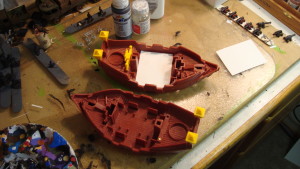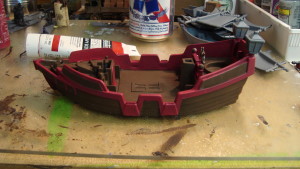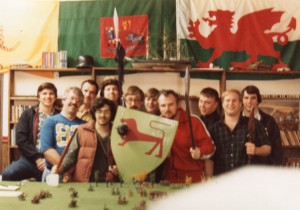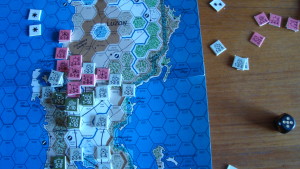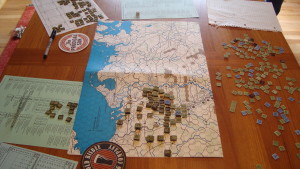Been playing “Irregular Wars – Confict at the World’s End”, off-and-on for the past couple of weeks. I bought the 2nd Edition rules last Winter for potential use as the ground combat system for my East African Renaissance Campaign. I was looking for something more streamlined than De Bellis Renationnis (DBR).
I’ve played DBR for a number of years using 25mm figures. Before that, it was George Gush’s rulesets. Gush was extremely detailed, DBR less so. I’ve enjoyed all of these rules. I’ve also played DBR’s cousin De Bellis Antiquitatis (DBA) with 15mm ancient and medieval armies. It is also a good system, but its renaissance variants seemed to lack period chrome.
Irregular Wars is described as “A Wargaming System for Small Actions in the Age of Discovery”. The 90 page book contains both rules,army lists and campaign guidance. It is a system….one which allows a great deal of flexibility, emphasizes playability and not gamesmanship. This is a far cry from DBR/DBA’s emphasis on precise alignment of units for melee and distances for shot. Even distances (or units) are flexible in IW, as each unit of measure is derived from base width. Any type of basing can be used, which avoids the living hell that is rebasing.
Many of my figures are based for DBR. The one “element” look just didn’t seem right for the larger table size allowed by IR. The solution was easy, just double up the bases. The result is a nice “block” unit providing a sense of density on the table.
While the lists aren’t as detailed as DBR’s, they are varied and provide for a random army composition. Outside of compulsory companies, the Lord (as IR puts it) must recruit an agreed upon number of troop types, then role a die to determine the number of companies available for each type. The number of figures per company is low, so an army can be built quickly and inexpensively.
IR uses several die types to randomize game situations. These range from d6 to d2. It also employs Chance Cards as well as a pre-game Disease and Mishaps table to inject uncertainity into a game. The ruleset includes five scenario types for those players looking for more than a straight-up fight. Easily reproducable game charts are contained at the end of the book.
Each unit is rated for resolve (more on that in a moment), movement, melee, short range fire and long range fire. Certain units have special capabilities. Here is a link to an Army Rosters sheet I put together, as well as a link to a unit Capabilities Chart.
The author states that resolve is the key element in the game system. Units lose resolve as the result of unfavorable combat outcomes, reaching a point where they waver (and retire) and, finally, when resolve reaches a zero level, eliminated as fighting units. Both wavering and scattering companies can effect the resolve of other companies. The Lord can rally a company, restoring one point of resolve. Resolve levels range from 5 to 3, with the former representing elite units.
The turn sequence is a basic roll for initiative, shoot, action, and melee. Gunpowder weapons may fire once before having to take an action to reload. Actions are not limited to movement or disengagement from melee. Specific units can hurl curses at the opposition reducing their resolve, or invoke blessings to restore resolve. Melee is straightforward and bloody. Melee strengths are added to a d6 roll. It doesn’t take long for those 3 resolve units to waver.
The result is something that I hoped to find, with well crafted random elements making it well adapted for solitaire play. Highly Recommended.
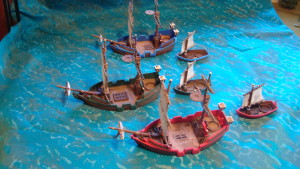
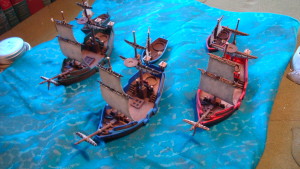
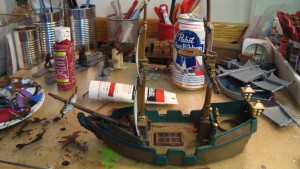 `
`